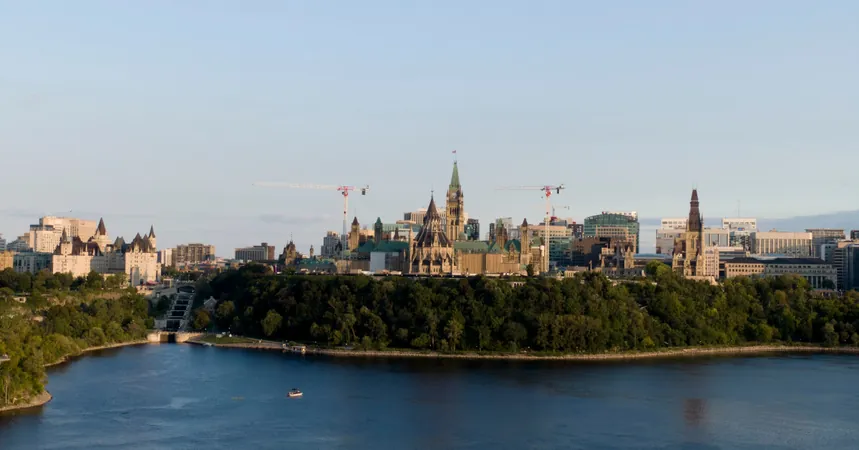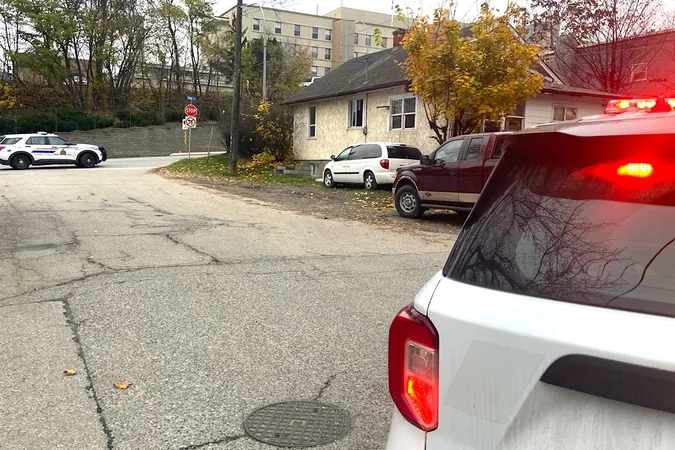
Ottawa's Funding Crisis: A Call for Transformative Change in Canadian Cities
2024-09-27
Author: Michael
The Urban Shift in Canada
As over 80% of Canada’s 41 million residents now live in urban areas—an astonishing increase from just a century ago—it's clear that our cities are at a tipping point. Despite this growth, the funding structures that support our cities haven't evolved since the 19th century. It's an urgent issue: cities maintain 60% of the nation's infrastructure but collect a mere 10% of tax revenue. This imbalance must be addressed now more than ever.
Inadequate Planning Exposed by COVID-19
The COVID-19 pandemic has pulled back the curtain on decades of inadequate planning. Cities like Ottawa have historically prioritized the weekday commuter lifestyle, investing heavily in public transit systems that primarily cater to 9-to-5 workers, overlooking the diverse and growing needs of their populations—especially as suburban living costs soar. The fallout from this neglect is becoming increasingly apparent.
A Plea for Financial Assistance
Ottawa’s Mayor Mark Sutcliffe has recently called for financial bailouts from federal and provincial governments, and while this plea highlights a tangible need, it also underscores a larger issue: Ottawa has been slow to adapt. The shift towards hybrid work has left the city struggling, particularly as its downtown core—home to a significant number of federal offices—faces declining foot traffic.
Reimagining Urban Spaces
The Canadian Urban Institute has called on the federal government to work alongside cities to reimagine the use of downtown federal properties. However, waiting for external assistance isn't a sustainable solution. Cities must innovate and re-strategize independently to create a vision for a more resilient urban environment.
Learning from Other Cities
Cities like Montreal, Toronto, and Vancouver have already set transformative examples, redirecting their focus toward enhancing quality of life through thoughtful urban planning, cost-effective designs, and increased use of public services. In stark contrast, Ottawa's governance has stagnated. Service cuts, increased transit fares, and insufficient actions on housing affordability are just a few signs of this inertia. Creative initiatives from other cities are often mired in red tape here, leaving Ottawa behind.
Geographic Challenges
One of Ottawa's unique challenges lies in its vast geography. This sprawling capital, larger than several major Canadian cities combined, has a population of one million, with a majority clustered in just 13% of its land area. The rural expanse contributes minimal tax revenue, complicating funding equity across diverse demographics.
Investment in Sprawl
Recent decisions, such as allocating nearly $600 million to develop a new suburb in Tewin, only exacerbate the phenomenon of "forever sprawl." These kinds of investments come with ongoing costs that will burden future city budgets, while simultaneously detracting from the needs of urban revitalization efforts.
Public-Private Partnership Shortfalls
Ottawa's struggles are further highlighted by decisions made regarding Lansdowne Park, another public-private partnership that has failed to deliver expected outcomes. Despite financial difficulties, the city has pledged an additional subsidy to the project, without adequately addressing past mistakes or exploring alternatives.
Opportunity for Revitalization
In contrast, those cities that have invested wisely in public spaces, such as Montreal, are thriving. Ottawa has a significant opportunity to rejuvenate areas like the ByWard Market, which has long lacked the necessary investment for revitalization.
Transit Challenges
Cutbacks to public transit amid rising fares have made Ottawa one of the costliest cities for public transport in Canada. Promises of “fixing transit” have instead led to service reductions—a far cry from what residents deserve. Meanwhile, substantial funds continue to flow towards road expansions, particularly outside the urban core, with a staggering commitment of $900 million over the next eight years.
Critique of the Federal Model
It’s important to consider Mayor Sutcliffe's criticism regarding the federal government's payment model, which lacks accountability. Nonetheless, it’s essential to view this within the broader context of Ottawa's unique dependency on federal investment and the accompanying economic benefits that arise from it.
Long-term Taxation Challenges
Yet challenges persist; Ottawa’s tax increases were significantly lower compared to other cities over the past decade—less than 27% compared to Calgary and Edmonton’s nearly 40%. This approach of promoting low taxes has long-term costs, leading to a deficit in urban infrastructure.
The Path Forward
The solution may necessitate a new funding model for Canadian cities. The introduction of a municipal income tax or congestion charges could open new revenue streams to address the critical needs of urban areas. Additionally, establishing reliable provincial and federal funding channels for essential infrastructure should not remain a matter of chance.
Benefits of Innovative Urban Planning
Cities that prioritize innovative public space and pedestrian-friendly initiatives see tangible benefits—both in quality of life for residents and increased traffic for local businesses. Ottawa has ample opportunity to follow this path.
Civic Engagement Opportunities
Moreover, stimulating civic engagement through design competitions for parks and community centers—unshackled from privatization pressures—could diversify Ottawa's approach to urban development.
Final Thoughts on Fiscal Responsibility
As Mayor Sutcliffe rightly states, Ottawa must secure real financial investments to align with its stature as the nation’s capital. The city's capacity to fund roads and athletes should equally reflect a commitment to enhancing citizens’ quality of life.
A Call for Change
With issues ranging from neglect of public amenities to fiscal missteps, the call for a reassessment of Ottawa's policies is overdue. To deserve larger investments from higher government levels, the city must demonstrate fiscal responsibility and a commitment to sustainable urban growth.
It’s time for Ottawa to step up and prioritize building a vibrant, inclusive, and resilient urban landscape that reflects its national significance. The clock is ticking—will we rise to the challenge?









 Brasil (PT)
Brasil (PT)
 Canada (EN)
Canada (EN)
 Chile (ES)
Chile (ES)
 España (ES)
España (ES)
 France (FR)
France (FR)
 Hong Kong (EN)
Hong Kong (EN)
 Italia (IT)
Italia (IT)
 日本 (JA)
日本 (JA)
 Magyarország (HU)
Magyarország (HU)
 Norge (NO)
Norge (NO)
 Polska (PL)
Polska (PL)
 Schweiz (DE)
Schweiz (DE)
 Singapore (EN)
Singapore (EN)
 Sverige (SV)
Sverige (SV)
 Suomi (FI)
Suomi (FI)
 Türkiye (TR)
Türkiye (TR)